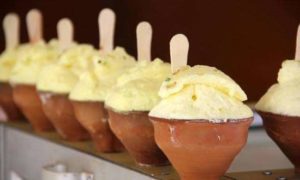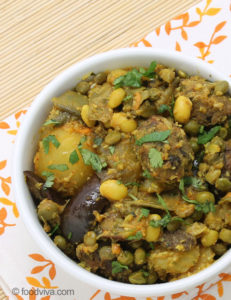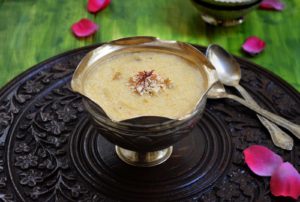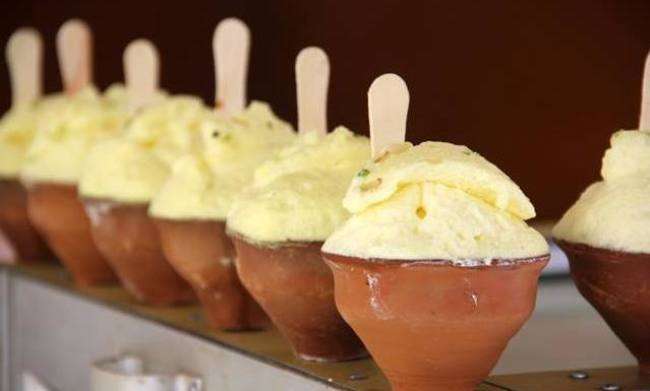What do you think of when someone mentions Winter season? The woollen clothes, the cold shivery weather, and mouth-watering winter delicacies. In the winters people depend on food largely to fight winter chills. This gives us delicious and exclusive culinary wonders that we relish only in the cold season. The streets of the country will be filled with aroma of such exotic winter delicacy’s right from the north to the south and east to the west. Here are some exclusive foods to start your exotic winter indulgence.
 Malaiyo of Banaras
Malaiyo of Banaras
Malaiyo is one of the mouthwatering exotic gem that is prepared only in Banaras (Varanasi) during winter season (from mid November to first week of March). This exclusive and exquisite sweet is being served by few vendors since ages, in the streets since ages. Malaiyo or Mallaiyo is flavored milk froth served in a small earthen bowl, garnished with Pistachios and Almonds. The forth would just melt in your mouth and give a heavenly treat to your taste buds. The texture of foam is very delicate, cloudy and frothy. It is exclusively sold in the morning till 11 am as the foam can stand only in low temperatures. However, these days you can see Malaiyo is being sold throghout the day in many new areas such as Gowdowlia, Sigra, Assi and Lanka. But the quality of Malaiyo is not at par with what you will get in Chaukhamba, Thatheri Gali areas of old Varanasi. The way Malaiyo is made is also amazing , the process starts a day before when milk is boiled for a specified period in very large Iron Wok , then its left outside in open, overnight so that dew drops get deposited on the surface of milk initiating the process of foaming. Later, in morning the milk is flavored with Sugar, Cardamom and Saffron strands and hand churned to create the froth or foam. Finally it is garnished with nuts, typically Almonds and Pistachio and is then served in earthen clay cups. Having Malaiyo is a totally mesmerizing experience and people of Varanasi wait for winter season to have this delicate dessert.
Pin nis of Punjab
nis of Punjab
Pinnis are unique only winter Punjabi sweet. pinnis are made with flour or they may be even made with moong dal or udad dal that is browned in a wok. They also contain mixed nuts , ajwain or sesame seeds. Pinnis are made and served in cold winter months as they give warmth and help in fighting winter chills. Pinnis can be stored in air tight containers and last for weeks, even months. Pinnis are sweetened with fine granulated sugar which also helps it last longer. The best thing is that they even do not need refrigeration. In days before refrigerator pinnis were stored in tall tin cans without any problem.
 Undhiyu of Gujarat
Undhiyu of Gujarat
Undhiyu is the most loved winter dishes of Gujarat so much so that it is also called king of Gujarati cuisine. It derives its name from the Gujarati word undhu, meaning inverted, because it is made in a special and classical inverted clay pot. It is more over a mixed vegetable preparation that is made from choicest of fresh winter produce. This dish is believed to originate in Surat and it’s the cities specialty as well.
This seasonal dish comprises of the vegetables that are available only during winter on the Southern Gujarat coastline, including the Surat, Navsari and Valsad regions including (amongst others) green beans or new peas (typically used along with the tender pod), unripe banana, small eggplants, muthia (dumplings/fritters made with fenugreek leaves and spiced chickpea flour (besan) or handva no lot, and either steamed or fried), potatoes, and purple yam, and sometimes plantain. These are spiced with a dry curry paste that typically includes cilantro leaves, ginger, garlic, green chili pepper, sugar and sometimes includes freshly grated coconut. The mixture is slow cooked to perfection for a long time, with some vegetable oil and a very small amount of water or with buttermilk, coconut and spices sufficient to steam the root vegetables.
The finished preparation is dry: individual chunks of vegetables are coated with a thin layer of spice and oil but retain their shape: the contents of the dish must therefore be stirred relatively infrequently during the cooking. Crisp vegetables such as bean pods must ideally retain a little of their crunchy texture. To ensure that no individual component is overcooked, the vegetables may need to be cooked in stages: the root vegetables and eggplant are half-cooked before adding the quick-cooking bean pods and ripe plantain. The finished dish is garnished with chopped cilantro leaf and lemon or lime juice before serving. Undhiyu served with puris and shrikhand is a common occurrence in Gujarati homes and also a delicacy during Gujarati weddings.
Milagu Rasam or pepper Rasam of south India
Rasam Is a popular south Indian soup that is relished with hot steaming rice, in south Indian households. But when winter approaches a variant of rasam with pepper, tomato, cumin , and special rasam powder is made. This special rasam is called milagu rasam or pepper rasam.
N olen Gurer Payesh of Bengal
olen Gurer Payesh of Bengal
In Bengal region of India Winters brings with it a gift from Mother Nature that is synonymous to heaven, nolen gur or otherwise known as palm jaggery. And when it is added to make payesh it really tastes like nectar from the heavens. Nolen gur’er payesh (rice pudding with date palm jaggery) is made by boiling rice and milk together to produce a creamy reduction. It is a Bengali winter specialty since nolen gur is available during the season. Used in a wide variety of Bengali sweet dishes during the winter months, nolen gur brings a depth of flavor and smell, in addition to mellow sweetness, to whatever dish it is added.


